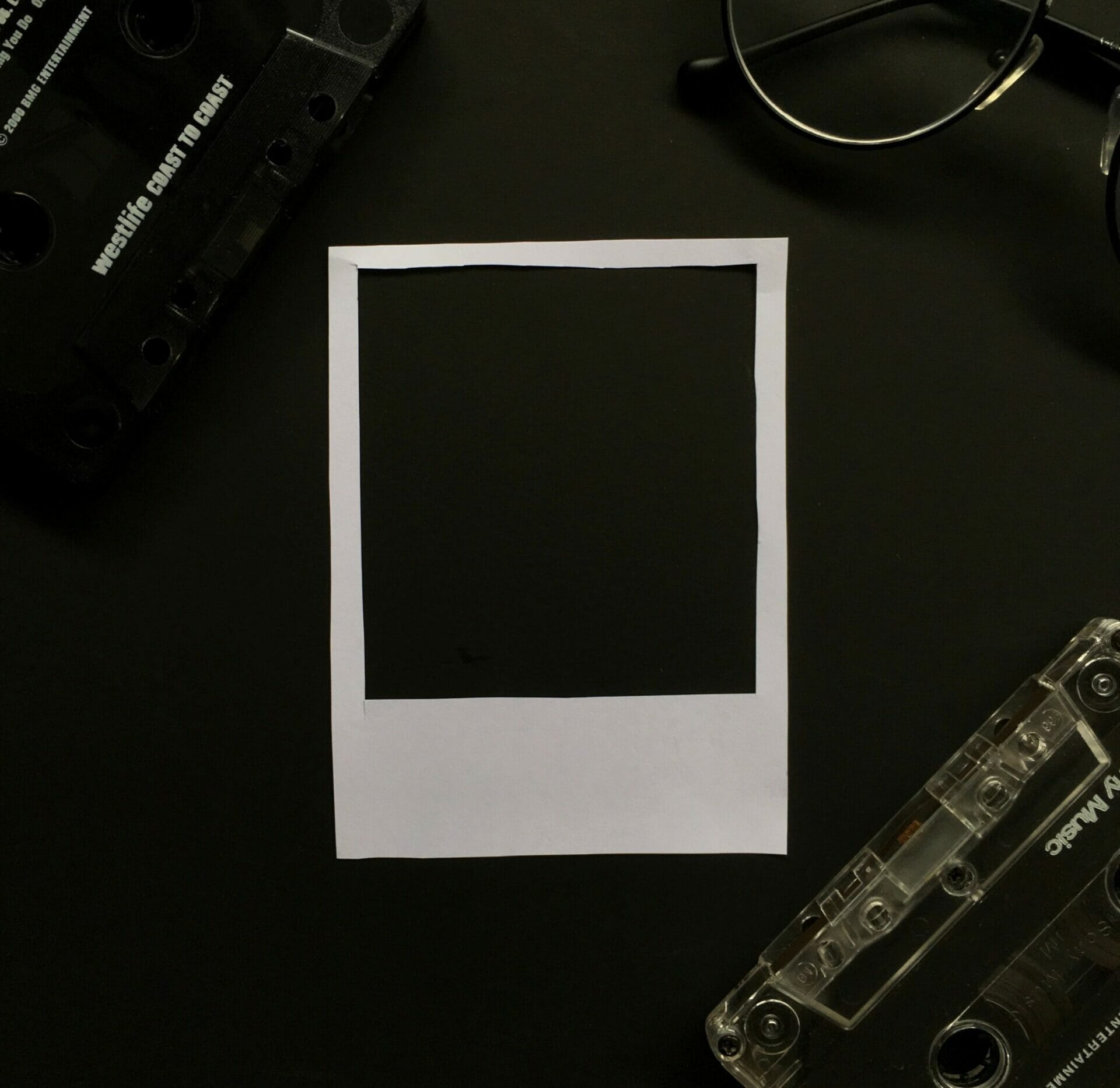
My First Film by Zia Anger Review | Truth Through Error
Year
Runtime
Director
Cinematographer
Production Designer
Country
Format
Genre
Subgenre
In Being and Time, Martin Heidegger discusses error not as the opposite of truth, but as its necessary path. The German philosopher argues that in error lies the very possibility of discovery, through the careful balance of revelation and concealment. Artist and director Zia Anger has made this dialectic between transparency and concealment her manifesto. In September, MUBI exclusively presented My First Film, her directorial debut.
This semi-autobiographical work, which has already sparked discussion at CPH:DOX (Copenhagen International Documentary Festival), stands out for two aspects: its sensitivity and its narrative style. Anger, an artist who works primarily with audiovisual media, has built her career on music videos and multimedia performances. It was one of these performances, created in 2019 and also titled My First Film, that provided the material for this cinematic debut.
- This Is (Not) a True Story
- Artistic Motherhood and Self-Determination
- The Art of Failure
- Abortion as Self-Awareness
- A Meta-Cinematic Work
- The Solitude of Failure
This Is (Not) a True Story
Nearly 15 years after her first attempts at directing, we see Vita (Odessa Young), Anger’s alter ego, revisit the troubled journey of making her first film. The original story, Always All Ways, Anne Marie, followed a young pregnant woman who decides to leave home in search of her mother. An ambitious project that, despite the presence of her friend Dina (Devon Ross), turns into a whirlwind of chaos and near-fatal events that reflect the young artist’s inexperience and enthusiasm.
As the improvised and tumultuous production progresses, deeper questions emerge: about the meaning of storytelling itself, the methods of storytelling, and how much of themselves an author leaves in their work. In Vita, Anger plays with the overlap between her personal history and that of the protagonist. She alternately declares that the story we are witnessing is now true and now false. The attempt at a “first film”, a project the director finally abandoned, was a failure in every respect: rejected by festivals, costly in terms of crew changes, and ignored by critics.
Anger aims to redeem that failure, recalling Samuel Beckett’s words: “Try again. Fail again. Fail better.” A mantra that becomes a method, an aesthetic, a revelation. People and artists tell their stories through success, but they write them through failure.
Artistic Motherhood and Self-Determination
My First Film transcends simple autobiographical memoir through a constant dialog between past and present. Anger masterfully interweaves the metaphor of artistic creation in the style of Fellini’s 8½ (1963) with that of motherhood, developing a feminist and postmodern discourse. The themes of abortion and pregnancy first appear in the film’s subtext and then occupy the main symbolic space. These themes are treated with an affectionate, humane and profound gaze, avoiding a sensationalist approach.
The director suggests that everyone should be able to give birth to what they want – whether it’s a child, a work of art, or even failure itself – to claim their own agency and, between the lines, what Adrienne Rich would have defined as “the lost self”. It’s a deconstruction of the common perspective that sees motherhood as the quintessential female vocation. Vita wants to forcefully assert that stopping or doing nothing can also be valid choices of equal value. As the doctor (Sarah Michelson) tells her near the end of the film: “You know, all you need is a body to create. But what you create is up to you.”
The Art of Failure
As in Charlie Kaufman’s Synecdoche, New York (2008) (from which it also borrows several recursive insights), creative failure becomes the fulcrum of a broader narrative about artistic and personal identity. It’s a necessary restructuring of one’s identity when projects don’t go as planned, especially debut projects, invested with a sacred aura of creation. ”This film is me”, Vita often repeats to her crew, who dedicate themselves to the production as if on a mission of personal affirmation. A mission lived with the decisive emotional intensity of a liminal passage.
Sharing even the mistake, giving it dignity and light, is a way of seeking connection and not feeling alone. “Why am I the only one to whom these things happen?” the protagonist often asks throughout the film. “It happens to everyone, it’s just that we don’t usually talk about it,” is the answer. A perspective that at first recalls the existential reflections of Sartre’s Nausea or Camus’s The Fall. Here, however, failure is simultaneously transformed into a means of self-knowledge and rebirth, as well as connection and proximity.
Abortion as Self-Awareness
Even the unborn, the unspoken, represent a choice and a story. Not guilt, but an act of courage and self-determination. The film reiterates this repeatedly in its poetic and rarely powerful finale, during the long mimed sequence of an abortion.
A film about redemption through acceptance, but also a cinematic work that questions its own nature. From why we tell stories, why they are important to people, to asking whether there are stories that don’t ultimately tell everything about the author. Vita confides that she has read that directors spend their lives repeating the same film. The same basic idea, which they try to express in the best possible way. And maybe there’s no difference between a film and a confession. What counts is sincerity, presence.
In the tumult of creation, expectation, and planning, Vita is disconnected. Disconnected from personal relationships, from herself, and from the friends she’s involved with the project, often appearing hostile or even manipulating them for her own ends. But just when everyone is abandoning her because of her behavior, she’s called back to the here and now. While improvising a script with her father and her last remaining friend, she loses control over the actors. But then comes the epiphany: “It’s just for a moment. I stopped caring. Because it was so beautiful. Just to make something with people.”
From the connection with others, from human closeness and understanding, the creative act of storytelling resumes.
A Meta-Cinematic Work
It’s precisely through the meta-cinematic structure that we enter the intimacy of Vita’s thoughts. This creates a deliberate short-circuit between different levels of narration and perceptions of reality. Insertions of different styles, films, fourth wall breaks, and time jumps. For example, the director often communicates with the audience (and not only) through the first lines of a Word document. Or through a constant voiceover that analyzes and reinterprets the footage with Vita’s (or Anger’s) present consciousness, often reminiscent of Chris Marker’s Sans Soleil (1983).
This dynamic creates a complex exchange between her current adult consciousness and the impressions of her twenty-five-year-old self. It is as if Anger wanted to tell her story again, from a different and more detached perspective. The result is a constant dialectic that opens the door to a sincere and often surprising intimacy.
Odessa Young’s spontaneity and charisma contribute to a visually disorienting work. At the same time, it remains consistent with the creative impulse and inner turbulence of the young protagonist director. To watch the film is to witness a living consciousness that remembers, ruminates, and seeks liberation. Through this complex layering of meanings, My First Film manages to reflect simultaneously on power and freedom, as well as the joy and pain that accompany every creative act and the human condition.
The Solitude of Failure
At the heart of the narrative, Vita and Zia Anger, now temporarily overlapping, confess that there’s no reason for choosing to make this kind of film. “I don’t know how to talk about these things. Or I don’t trust the rules of cinema to do them justice.” And so the rules are subverted and rewritten, not out of iconoclasm, but with a measured sense of necessity.
Not knowing how to talk about failure, Zia Anger tells it in all its facets: from the personal to the collective; from the sentimental to the artistic. That’s why her approach has been defined as “an exceptional contribution to radical transparency.” Not knowing which is the right medium, Anger uses them all, on multiple levels and with elegance. It’s not a Sisyphus-like surrender of consciousness, but a mother’s unconditional love for every expression she creates.
Accepting one’s creation, whatever it may be, even non-creation itself, is an affirmation of identity. To give life to something is to create a new form of self. And in this, as Vita says: “Each time you find a new version of the truth.”
Tag
Buy a ☕ for Hypercritic









